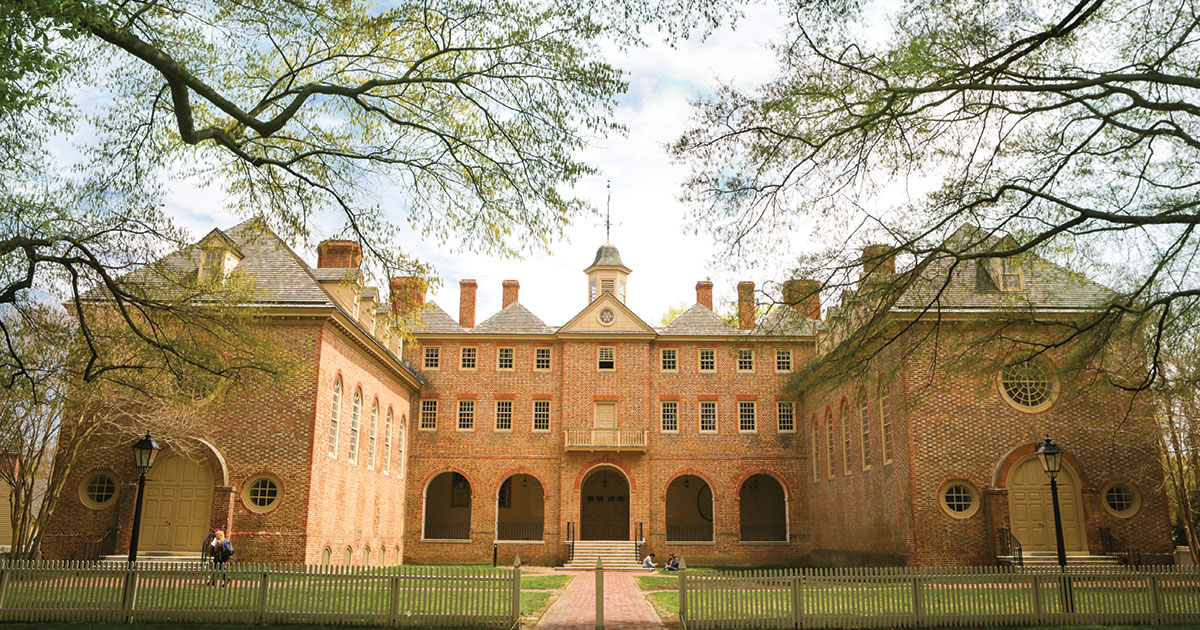W&M Board unanimously approves naming of residence halls for Hardy and Lemon
The William & Mary Board of Visitors unanimously approved a resolution Friday renaming two prominent residence halls in memory of two key figures in the university’s African-American history.
The Board’s action renames the two Jamestown Residences, which border Jamestown Road, Hardy Hall and Lemon Hall. Jamestown North will become Hardy Hall and named in recognition of the late Carroll Hardy, a longtime and beloved administrator in student affairs who made an indelible impact on diversity at the university. Jamestown South will become Lemon Hall and named in memory of an enslaved man owned by William & Mary in the late 18th century and for whom the university’s Lemon Project is named.
President Taylor Reveley announced the proposed renaming of the residence halls in a campus-wide message earlier in the week that outlined immediate actions and next steps related to a recent report by the university’s Task Force on Race and Race Relations. The task force, led by Chief Diversity Officer Chon Glover, submitted its report to Reveley at the end of March 2016 with a list of prioritized recommendations.
“Building names have meaning. It was long past time for African-Americans to be among those whose names grace major buildings on our campus,” Reveley said. “It will be quite wonderful to have Lemon Hall and Hardy Hall in our midst.”
The report and the president’s message is now available on the task force website. The group, which included students, faculty, staff, alumni and a Board member, began its work in March 2015 and conducted a comprehensive review of race relations at W&M, including six town hall forums on campus climate. The group submitted 51 recommendations to Reveley, including 10 prioritized recommendations.
“There were really comprehensive and thoughtful recommendations, which we believe will make a big impact on this community,” said Board member Kendrick F. Ashton, Jr. ’98, who served on the Task Force and praised Glover for her leadership of the group’s work. “Taylor’s message and the immediate investments that were made are significant and incredibly well-received. Particularly the decision to name one of our prominent buildings after Dean Hardy is a momentous step forward for this community in terms of symbolism. She was someone who was deeply revered and made a big difference on this campus for people of color.”
Carroll Hardy, or “Dean Hardy” as she was affectionately called by students in the 1980s and ’90s, is credited with being a tireless advocate for diversity at W&M and improving the campus experience for students of color. Hardy joined W&M in 1980 as associate dean of multicultural affairs and served in several different capacities, including associate dean of students for minority and commuting student affairs and associate dean of student affairs. Among her many accomplishments at W&M and beyond was the establishment of the National Black Student Leadership Development Conference for college students across the country. She also founded the Hulon Willis Associationfor African-American students and alumni, worked to increase diversity of W&M’s student body through six summer enrichment programs for students in grades 8 to 12, and helped create and support 15 multicultural student organizations at William & Mary. Hardy, who received honorary alumna status at W&M, passed away in 2012.
Established by the Board of Visitors in 2009, the Lemon Project is an ongoing research initiative for exploring William & Mary’s involvement in slavery and segregation and its ongoing relationship with the African-American community. While very little is known about Lemon himself, his name represents an effort that has become a model for other universities looking to study, acknowledge and learn from their past history. “In many ways, Lemon stands in the place of the known and unknown African-Americans who helped to build, maintain and move the College forward,” the project states on its website.
In addition to the renaming of the residence halls, Reveley announced several other actions, including a $1-million commitment toward a hiring pool to improve diversity at W&M, $100,000 in staffing and operating funds for the Office of Diversity and Equal Opportunity, additional training for faculty, staff and students and the hiring of an outside consultant to engage the community to better understand concerns of African-American employees. An implementation team will be named soon to review all of the task force’s recommendations and develop a plan for future actions, Glover said.
“This has been a very thoughtful and comprehensive process,” said Glover, adding some members of the task force will transition to the implementation team. “The task force was an extraordinarily dedicated group of people and we had a really tough task. This is a work in progress and this is just the beginning.”

